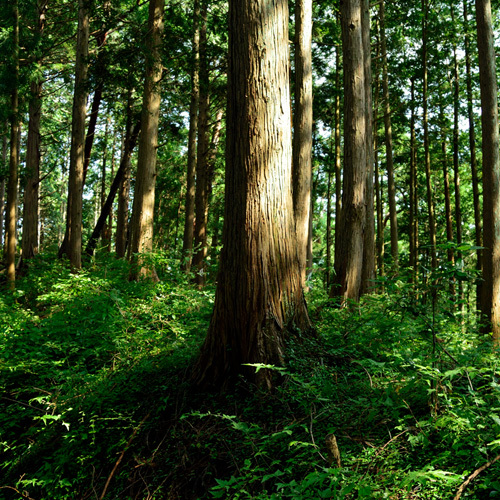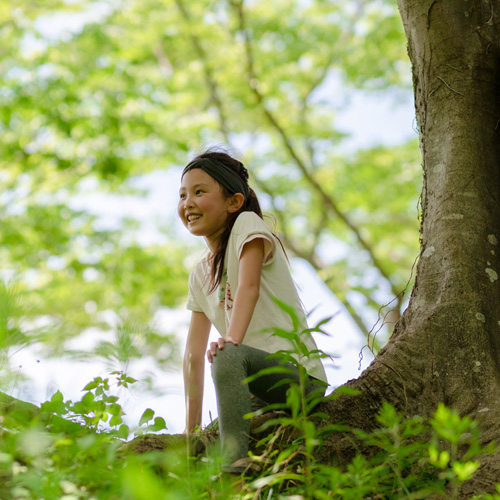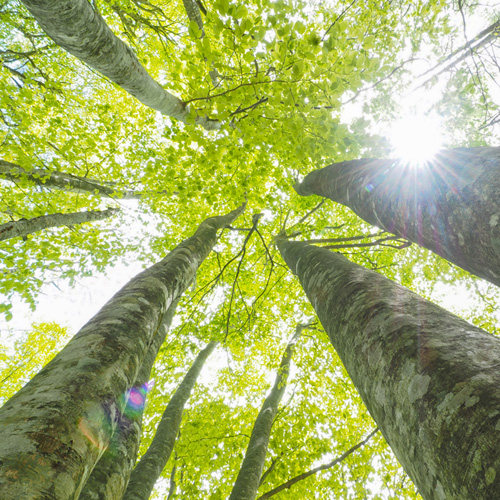
Forest Bathing: Getting Your Vitamin Tree
Author: be well™ with Big Y® Registered Dietitian Team
Go take a hike! Seriously—get outside because your health and wellbeing have much to gain.

“Forest bathing” is not what one might first think when hearing the term “bathing.” Though, cooling off in a running stream surrounded by trees is quite an awesome experience. Forest bathing is also not just taking a hike, either.
The term forest bathing, or Shinrin-yoku, was introduced by the Japanese Forestry Agency in 1982. It was considered the act of walking in a living forest, immersed in the smells of all that is present such as trees, leaves and dirt.
During forest bathing, your actions are much more mindful than with a traditional hike. You are creating a mindful outdoor experience, as the Kripalu Center for Yoga and Health deems their interpretation of the concept.

When participating in a mindful outdoor experience, the aim is to join the environment around you versus disrupting it. Your sense of sight, sound, smell, touch and, at times, taste (e.g.: drinking hemlock needle tea) becomes immersed in nature.
Your experience can be as part of a group or alone. As you make your way to the tree line, taking time to acknowledge the transition from the normal hustle and bustle of your day to being received by the more-than-human world around you helps to create the scene for what’s to come.

Having a mindful outdoor experience (MOE) can include an array of activities. From walking slowly and gently on or off trail (with or without shoes), adjusting your vision to using your periphery versus only looking straight ahead or centering attention to a particular tree or mossy knoll as you fully engage in exploring its details and qualities, there are many ways to explore and mindfully connect with nature.

An impactful part of an MOE is finding your sit spot. A sit spot is when you sit or lay where you are, with minimal movement or noise and watch the natural activity of the environment wake up around you. As you begin to explore forests in this way, you’ll notice animals like birds, deer and rabbits feel safe enough to return to their habitat. Being saturated in the offerings of the more-than-human world can feel meditative and extremely relaxing.

Although allotting time to spend with the more-than-human world in this way may sound like a nicety, getting a daily dose of vitamin tree has a real place in your health and well-being. Researchers have found forest bathing can¹:
- Lower blood pressure
- Activate the parasympathetic nervous system (e.g.: rest and digest)
- Suppress the sympathetic nervous system (e.g.: fight, flight or freeze)
- Increase immune functioning
- Improve mental health by shifting mood and alleviating depression
Thankfully, being in New England we are surrounded by the abundance Mother Nature has to offer. Go for a stroll in the forests all around us, sit quietly and see what comes alive around you. And if you’re interested in a more formal experience, visit Kripalu.org and find a trained Mindful Outdoor Guide in your region.
¹Furuyashiki, A., Tabuchi, K., Norikoshi, K., Kobayashi, T., & Oriyama, S. (2019). A comparative study of the physiological and psychological effects of forest bathing (Shinrin-yoku) on working age people with and without depressive tendencies. Environmental health and preventive medicine, 24(1), 46. https://doi.org/10.1186/s12199-019-0800-1.
Published 4/25/2022


